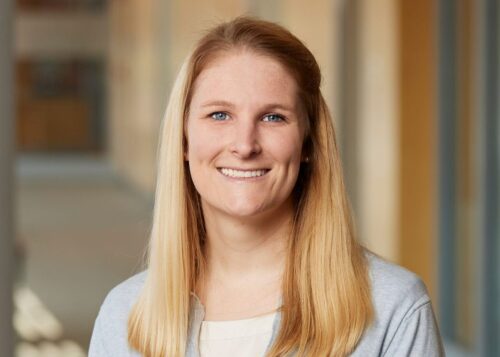Hospital Initiative Strives for an Autism-Friendly Patient Experience
August 1, 2019
By Kerry Benson

Getty Images
A comprehensive hospital initiative addresses treatment challenges for children and adults with autism.
Interested in building an autism friendly healthcare practice? Join the first annual Autism Friendly conference, “Building an Autism Friendly Practice,” on September 11, 2020. This conference is designed for healthcare professionals from any discipline or practice setting who want to create or strengthen their organization’s ability to serve patients with autism spectrum disorder (ASD). Click here to register or for more information.
For people on the autism spectrum, visiting the doctor can be an overwhelming experience. Confronted by the beeping of elevators and the bustling noise of the waiting area, some struggle before they even enter the exam room. Then, they’re barraged by a flood of sensory stimuli: bright fluorescent lights, crinkling paper, the acrid scent of rubbing alcohol.
And that’s all before they see the doctor. Interacting with providers poses another round of challenges — communications barriers, heightened anxiety, and, often, a lack of confidence and training on the part of clinicians in addressing the unique needs of people with autism.
The sensory and communication challenges that people on the autism spectrum face in healthcare settings are not a niche concern. One in 59 children has received an autism diagnosis, according to the Centers for Disease Control and Prevention (CDC), and they experience poorer health outcomes and require more expensive care. Compared to neurotypical peers, their healthcare costs are 3 to 7 times higher, their hospital stays are longer and more frequent, and they’re more likely to have additional health conditions.
“They end up in the emergency room. They end up inpatient. They end up with unnecessary surgical procedures — and so much worse,” says Shari King, director of the Autism Program at Boston Medical Center (BMC).
To improve the patient experience and health outcomes for people with autism, practitioners at BMC started the Autism Friendly Initiative, which addresses the complex and multifaceted needs of people on the autism spectrum through provider training, resources for patients and families, and careful attention to the hospital’s physical environment.
“We collectively decided that we didn’t want to limit ourselves to just one arena,” King says. “If we were really going to do this, we were going to do it in the most comprehensive way possible.”
Bridging the gap in provider familiarity with autism
Treatment difficulties are often due to communication barriers between patients with autism and their providers. Early on in the initiative’s development, when the team sent out a survey to all clinicians and staff, 50% of respondents indicated that they weren’t fully comfortable examining patients on the autism spectrum, and 71% wished for more training.
To address these gaps in knowledge and familiarity, a major part of the Autism Friendly Initiative involves training programs for clinicians, staff, and security guards. The programs include tips for interacting and communicating with patients on the autism spectrum, information about addressing sensory needs during clinic visits, and an overview of the condition and available resources.
The core message of these trainings is beautifully simple: Listen. While caregivers and accompanying adults can be great sources for information and support, the integration of patient voice should always be paramount.
“Patient voice is at the center of all that we do,” says program manager Lauren Bartolotti. “Listen to the patient. Talk directly to the patient. Presume competence. We do so much training on how you interact with patients with autism, and truthfully it’s how you should interact with any patient: directly with the patient.”
Addressing needs of patients with autism
The initiative also involves three ongoing projects that focus directly on addressing individual patient needs.
- An Autism Support Checklist allows caretakers to document their loved one’s communication, sensory, and safety needs. This information is then added to the patient’s electronic medical record so it can be easily accessed by providers.
- The Healthcare Social Stories App, a free, patient-tested app inspired by the fact that people with autism often become overwhelmed by unfamiliar or unpredictable situations, helps users prepare for doctor visits with step-by-step walkthroughs of the day’s events, complemented by photographs of the environments the patient will encounter.
- In collaboration with the Child Life Program, the program provides sensory toolboxes to over two dozen clinic settings. The toolboxes contain sensory-friendly items, such as sunglasses, stress balls, a weighted lap pad, and pop tubes, to help patients feel more comfortable during visits across the hospital.
So far, these efforts to improve patient experience have paid off tremendously, say King and Bartolotti. They tell the story of one patient whose past visits had been so overwhelming — so flooded with panic — that security had always ended up escorting her from the building.
Recently, the child and her family met with Autism Resource Specialist Liz Ferriero before an appointment. Together, they explored what upset the child and what made her feel safe, and Ferriero liaised with the provider to set up the appointment at an ideal time in a calmer environment. When that day arrived, Ferriero was there to offer the child her favorite snack and talk her through the upcoming events with a social story that reviewed exactly what to expect.
The appointment was wonderfully successful, and the patient has returned for several other appointments, including primary care.
“The child was grinning ear to ear, saying that she loved the doctor,” says King. “It was like night and day.”
A larger autism-friendly environment
In light of the additional health-related burdens that people with autism often face, these return visits are particularly important victories. The program is capturing these victories and others like it in ongoing research and QI projects, which investigate how the initiative is improving patient quality scores and reducing healthcare utilization and costs. A recently completed ethnographic study following 23 patients and families during their visit confirmed that most barriers for patients with ASD occur inside the exam room, findings that support physician training on patient-directed communication as a necessary facilitator to care.
In light of the additional health-related burdens that people with autism often face, calm and seamless return visits are particularly important victories.
As they head into their third year, the Autism Friendly Initiative team is now focusing their efforts on scaling up their interventions. Their work has helped so many people — not only at BMC, but at clinics and hospitals across the nation and the world. That, King says, is the most fulfilling part of what they do. “We’re pretty excited to be recognized as a growing leader in this space,” King says, who adds that they’ve partnered with hospitals nationwide, including the Children’s Hospital of Philadelphia, Mount Sinai Medical Center in New York and Boston Children’s Hospital.
As King and her team continue to strive for patient equity, they remain motivated by their mission: “We are dedicated to making sure that whenever a patient steps foot on our campus, they are accessing the quality healthcare that all patients deserve to receive,” she says.


